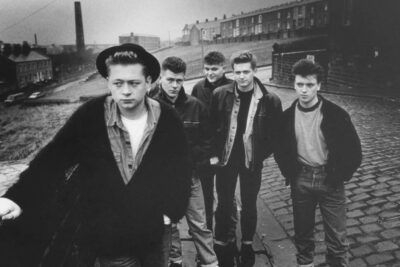
A lookback at the classic jukebox and why collectors are investing in them now
by Northern Life
When you think of a jukebox there’s one image that comes to mind. It’s that distinct cabinet shape with the curved top, the bright colours and the shiny exterior. It’s that little slice of quintessential 1950s Americana that takes you right back in time to Elvis Presley, milkshake bars and leather jackets.
The question isn’t really why are collectors investing in the classic jukebox but more why wouldn’t they? The jukebox is an iconic piece of technology that defines an era. It represents so much; from cultural freedom to youth empowerment and advances in technology. Getting your hands on a jukebox, original or not, is all about the history and the iconic status it holds.
A brief lookback at the classic jukebox
The jukebox evolved out of the phonograph which was invented by Thomas Edison back in 1877. It was never intended to play a role in the entertainment industry, but soon became so popular that people discovered new ways to maximise on the technology.
The first coin-operated phonograph was created in the late 1880s by Louis Glass and William S Arnold. Very quickly after this, the ‘nickel-in-a-slot’ machine became a staple in public areas across America. This is when the ‘big four’ emerged, the key manufactures of these machines – Ami, Seeburg, Wurlitzer and Rock-Ola.
The next big step in the jukebox timeline was Emile Berliner’s transition from cylinder-based phonographs to disc record-based ones. This saw the creation of the gramophone in the 1890s. After this, in 1906, the John Gabel Manufacturing Company produced the first automatic multi-selection coin-op phonograph which had 24 songs for customers to select from. Then the first electronic vacuum tube amplifier was created in 1916 by Bell Labs. This paved the way for the first commercial electric loudspeaker in 1924.
The jukebox rose in popularity as more and more genres of music became available to listen to on it. From classical to RnB, the jukebox gave its listeners a variety and the ability to choose. However, jukebox sales began to dip in the 1920s when radio entered the picture and became an accessible source of free entertainment.
This soon came back around in the 1930s. Although jukebox sales fell so drastically as a result of the Great Depression that some manufacturers were put out of business, they soon picked up again towards to end of the 1930s. It was around this time that the jukebox got its name. In 1937 the term ‘jukebox’ emerged. It’s believed to have originated from the slang term “jook” which meant dancing or acting wildly or disorderly. The word ‘jukebox’ came from the American Southern states, where members of Afro-American communities would relax in ‘juke joints’ in the evenings.
As the financial crisis finally came to an end, people wanted to celebrate and enjoy life again, and so began the Golden Age of the jukebox…
The Golden Age
The 1940s and 50s firmly established the place of the jukebox in society. This is when jukebox design really came into its own, with bright colours and lights being used to attract people to buy and use them. Their popularity only increased with the introduction of one particular style of music – rock n roll. This secured the jukebox’s legendary place in history. Rock n roll was owned by the youth of America, and the jukebox became the stage from which it was performed.
The jukebox moved from being associated as an adult form of entertainment and became the go-to teenage pastime. They moved from bars and clubs and became a draw to restaurants and diners across America.
Unfortunately, the jukebox was a craze. Times changed and its adoring teenage fans moved on to pastures new. Clubs and discos popped up during the 1960s and 70s, and the youth moved to experience music in different venues.
The dawn of the 1980s saw the first ever portable audio cassette and the sad overshadowing of the jukebox. From the 80s onwards, music became an increasingly private and portable experience. The draw of the communal, shared-moment jukebox was forgotten.
Why are collectors investing in classic jukeboxes now?
But despite the slow retreat of the jukebox into the shadows, it’s found a new niche from which to shine. The jukebox will forever remain a nostalgia icon, a legend in the fabric of the social culture of America. And it’s for that reason that they’re now so sought after.
The ‘big four’ manufacturers all had a go at re-releasing their most popular jukebox models in the hopes that they would take off again, but this wasn’t the case. These models were, however, well received by the jukebox-loving community. The jukebox still manages to offer something unique when it comes to experiencing music – the interaction of choosing a piece of music that’s heard by a group of people is a shared experience.
Since the 2000s music and audio technology has come a long way. MP3 players, smart phones and digitalised music libraries have replaced the CD and record collections. But the jukebox has evolved to become a part of this new audio world. There are now digital jukeboxes with touchscreens and the ability to connect other portal devices to access wider music libraries.
But the classic jukebox is still going strong. With the rise of the hipster movement there’s been a growing interest in owning this iconic music experience. The interest in retro and nostalgia fuels the buying and selling of these items and, with the Internet generation at its peak, that process is made even easier.
There’s still very much a place for the jukebox in society today. No matter what form it takes, whether digital or physical, there’s still a want to use it and experience it. Putting it simply, the jukebox is still to this day a fun, shared experience so why would we want to leave it in the past?




